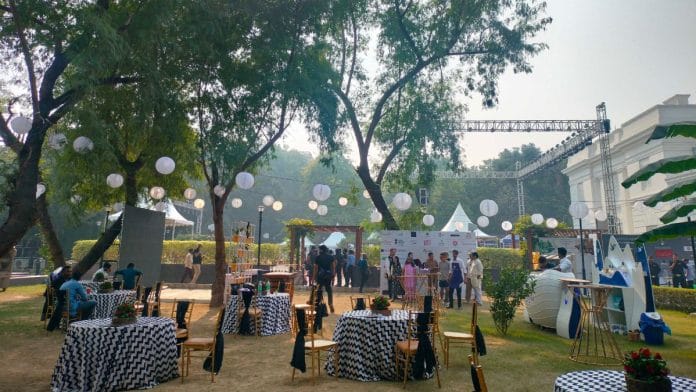New Delhi: At first glance, Kerala and the Northeastern states have little in common. But they are bound by the profound desire to preserve their cultural identities and heritage.
A two-day festival, Anant Samagam, held recently at Delhi’s Travancore Palace explored these ties through craft, cuisine and clothes. In keeping with the theme, Manipuri black rice puttu and Kerala-style pork vindaloo rubbed shoulders with Assam’s famous fish preparation, masor tenga.
“The purpose of Anant Samagam is to create awareness and bring back cultural significance to the youth. Everybody is looking very western, we need to look inwards and take the best practices, and then look outward,” said Rennie Joyy, chairman and managing director of Aalekh Foundation, which co-hosted the festival along with the Amazing Namaste Foundation.
Anant Samagam aimed to break barriers of geography and connect seemingly disparate regions through their cultural heritage. The south and the Northeast states were chosen because of their unique location and minimal visibility in mainstream media.
“They are both located in the extreme regions of the country, near the coast. Rarely do we see them being celebrated under the same roof, yet there is such harmony, such a sangam,” Joyy added.
Also read: How I trained a Delhi restaurant to serve Sadhya—walk in mundu, don’t use trays
From craft to cuisine
At the festival, a kite craftsman from Kerala, Muhammad Usman’s skilled hands deftly shaped and decorated a kite. The youngest in his family, Usman has competed in kite-fighting tournaments throughout the country. It’s more than just a hobby.
“My life is devoted to these kites,” Usman said, “It’s a legacy passed down from my father, and I want to bring this to as many people as possible.”
The historic Travancore Palace was transformed into a veritable melting pot. Cotton gamosas from Assam, woodwork and artefacts from Kerala, shawls and baskets from Nagaland—weavers, potters and artisans displayed totems of their cultural identity side by side.
A fashion show, curated by Liza Varma, former Femina Miss India Runner-Up and a leading fashion director along with fashion designer Sonam Dubal drove the message home. Designers such as Daniel Syiem and Shalini James blended the traditional textiles of the Northeast and Kerala with modern silhouettes. Models walked the ramp in mekhela chador, naga shawls and kasavu sarees. The traditional Kerala mundu was repurposed as a jumpsuit, and evening gowns proudly displayed tribal motifs.
Live demonstrations were an integral part of the festival. Visitors milled around the stalls to watch the intricate process of weaving threads into fabric using a loom, as well as the precise calibrations required to craft the perfect kite. At the live cooking demonstration, Masor Tenga, an Assamese fish delicacy was prepared for guests.
Also read: An Assamese can never be fully vegetarian—Even temple ‘praxad’ is often incomplete without meat
Bringing stories to screen
No festival is complete without a film or two. One of the final events at Anant Samagam was a panel discussion on bridging the gap between Kerala and Northeast cinema and the mainstream.
“Films are a great nexus between the lived experiences of the audience and the unknown which lies beyond our walls. They can be a powerful force, because they narrate reality, the realities of multiple others, like ourselves,” said actor Adil Hussain who was part of the session. He brought a personal touch to the talk when he reminisced about his days growing up in Assam and later working in Malayalam films.
“How often is it that people from Kerala meet people from Assam or Meghalaya or Tripura to exchange perspectives and palates? That in itself is a remarkable feat.’
(Edited by Theres Sudeep)






